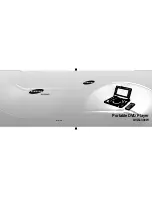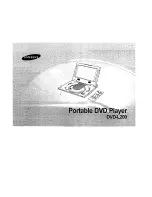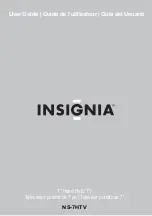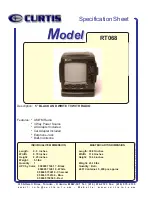
TFP1253
Page 4 of 8
EMEA and APAC:
TNGC-1150
13 Amps @ 400 VAC
TNGC-1500/2000
17 Amps @ 400 VAC
TNGC-3000
22 Amps @ 400 VAC
Air Connection
Americas:
TNGC-1150
1/2 in. NPT Female
TNGC-1500/2000
1/2 in. NPT Female
TNGC-3000
1 in. Female
EMEA and APAC:
TNGC-1150
1/2 in. BSPP Female
TNGC-1500/2000
1/2 in. BSPP Female
TNGC-3000
1/2 in. BSPP Female
Drain Connection
Americas:
TNGC-1150
1/4 in. NPT Female
TNGC-1500/2000
1/2 in. NPT Female
TNGC-3000
1/2 in. NPT Female
EMEA and APAC:
TNGC-1150
1/2 in. BSPP Female
TNGC-1500/2000
1/2 in. BSPP Female
TNGC-3000
1/2 in. BSPP Female
Installation
The TYCO NG-1 1150, NG-1 1500, NG-1
2000, and NG-1 3000 Stand-Alone
Nitrogen Generators must be installed
in accordance with this section.
WARNING
Do not operate the TYCO Nitrogen
Generator if damaged during ship-
ment, handling or use. Failure to do so
may result in personal injury or prop-
erty damage.
Operation of the nitrogen membrane
above the rated design pressure could
be hazardous. Do not connect the
nitrogen generation equipment to com-
pressed air sources that can exceed
the maximum rated pressure without
installing pressure controls and safety
relief devices in the compressed air
supply line.
Specific procedures must be devel-
oped for maintenance and servicing
of the equipment where the nitrogen
membrane is located. Appropriate
labels must be continuously displayed
in all areas where personnel might be
exposed to a nitrogen atmosphere
under normal and abnormal conditions.
Nitrogen is nontoxic and largely inert.
Rapid release of nitrogen gas into an
enclosed space displaces the oxygen
and can cause an asphyxiation hazard.
CAUTION
Do not install the TYCO Nitrogen Gen-
erator or Air Compressor Package in
an area where ammonia, sulfur dioxide,
hydrogen sulfide, mercaptans, chlo-
rides, chlorine, oxides of nitrogen, acid
fumes, solvent vent vapors, and ozone
vapors or similar contaminates exist.
The equipment can be damaged by
ammonia and other vapors shortening
membrane life.
NG-1 Nitrogen Generators
Step 1: Mounting the Stand-Alone
Nitrogen Generator
The TYCO Stand-Alone Nitrogen Gen-
erator is designed to be mounted
directly to the floor and/or the wall at
the installation location. Several factors
should be considered in choosing the
proper mounting location for the nitro-
gen generator:
• Access to the power supply (dedi-
cated circuit)
• Access to the air source supplied to
the nitrogen generator
• Access to the sprinkler riser being
supplied from the nitrogen generator
• Access to drain for the condensate
discharge line
• Clearance at the front of the unit to
open cabinet door
• Clearance around ventilation vents
on side and bottom for proper cabi-
net ventilation
• When floor mounting the cabinet,
ensure floor is flat and level
• If wall mounting the cabinet, ensure
the wall is capable of supporting the
weight of the generator cabinet
The cabinet includes pre-punched
holes in the feet for floor mounting and
holes in the back panel for wall mount-
ing using standard anchors.
Step 2: Power Supply
The Nitrogen Generator requires a ded-
icated power supply that connects to
the terminal blocks in the nitrogen gen-
erator cabinet. See Figure 2A or 2B as
applicable.
Step 3. Plumb the Nitrogen/Air
Supply Line
The nitrogen/air discharge plumb-
ing from the nitrogen generator is to
be connected directly to the sprinkler
system valve trim using a minimum
of 1/2 in. to 1 in. black steel, galva-
nized steel or copper piping. The size
of the nitrogen/air supply line is to be
based on the length of pipe between
the nitrogen generator and the fire
sprinkler systems along with the total
volume of the fire sprinkler systems
being supplied. The nitrogen genera-
tor requires an in-line Air Maintenance
Device (AMD) that is equipped with an
on-board field adjustable pressure reg-
ulator for each zone being served. The
preferred AMD is the TYCO AMD-1.
Refer to technical datasheet TFP1221.
Note:
When both dry pipe and preaction
fire sprinkler systems are connected to
one nitrogen generator, additional equip-
ment may be required if the fire sprinkler
systems operate at different supervisory gas
pressures.
Step 4: Plumb the Condensate Drain
Line
The Stand-Alone Nitrogen Genera-
tor will occasionally discharge a small
amount of condensate water from the
coalescing filters inside the cabinet. It
is recommended that the 1/4 in. drain
connection be plumbed to a floor drain
or building exterior. When plumbing to
a drain is not feasible an evaporative
collection chamber can be used.
Step 5: System Signals and Monitor-
ing (where used)
The nitrogen generator cabinet has
two system signals and five outputs
that can be monitored by the facility’s
BMS or fire alarm system as shown in
Figure 2A or 2B as applicable.
• Bypass Alarm - The nitrogen gener-
ator is operating in the bypass mode
which is activated when the bypass
valve is in the
fast fill
position to fast
fill the fire sprinkler system and the
air supplied directly from the air com-
pressor has reached a pressure of 20
psig (1,4 bar). (Flashing amber light)
• Leak Monitor - The nitrogen gener-
ator is equipped with a leak moni-
tor audible signal which is activated
when the nitrogen generator runs
excessively. (Audible signal)
The nitrogen generator cabinet includes
system monitoring signals which can
be monitored through a building moni-
toring system, if desired:
• Nitrogen Generator Running - Form
C contacts
• Bypass Mode Alarm - Form C
contacts
• Nitrogen Generator Power Monitor-
ing - Form C contacts
• Leak Monitoring - Form C contacts
• Nitrogen System Supply Line Pres-
sure - Analog Signal
NG1 Compressors
Step 1. Mounting the Air Compressor
The simplex air compressors are
designed to be mounted directly to
the floor in the fire sprinkler riser room.
Several factors should be considered in
choosing the proper mounting location
for the air compressors:
• Access to the appropriate power
supply (see Step 2 for power circuit
requirements per compressor sizes)
• Access to the nitrogen generator
inlet 1/2 in. supply line
• Access to a drain for the condensate
discharge line
• Clearance to access air compressor
for servicing


























